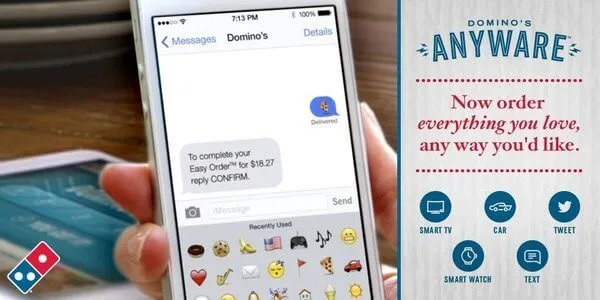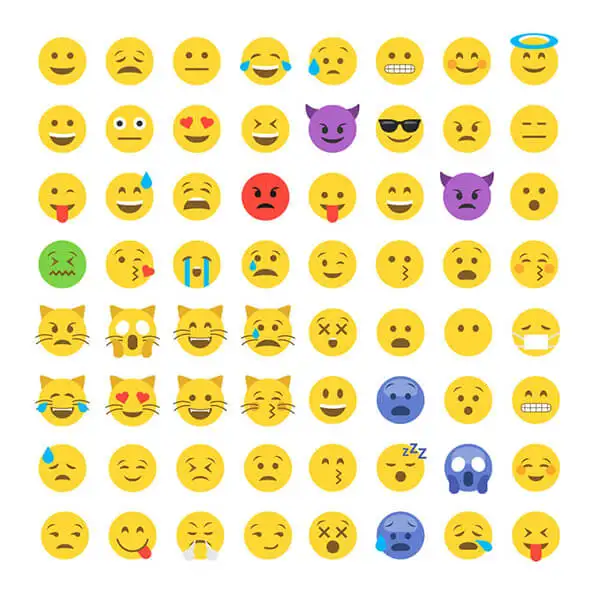Updated 23-03-17
Have you noticed anything different about Google search results? Emojis have suddenly returned to desktop search result snippets. After a long absence, they’re back! This is good because almost everyone online – 92% of users – use emojis, and brands are using them too. According to a study, emoji-based marketing campaigns have increased 777% year-on-year. But how do emojis help drive sales and create successful marketing campaigns?
People love emojis!
Dr Owen Churches, from the school of psychology at Flinders University in Adelaide, discovered that humans react to emojis in the same way we react to real human faces. So emojis allow you to craft messages that have more emotional weight. Since 90% of all purchasing decisions are made subconsciously, if your brand can tap into the emotional core of your audience, your messages will be more effective.
From when we first open our eyes as babies, we are programmed to recognise faces. Because emojis so closely resemble human faces, brands can add a personal touch to their marketing by using them.
Customers prefer to feel like they’re talking to a person rather than a faceless brand. Consumers who receive good customer service via human interaction are more likely to behave positively toward a brand. By using emojis, even small or resource-limited brands can give a little bit of the personal touch to each of their customers.
Using emojis in email marketing
Emojis are a powerful tool for email marketing. Used in a subject line, they make your email stand out among all the others. This means that there’s a higher chance your subject line is read and your email opened. Research shows that 56% of brands that use emojis in their subject lines see increased open rates.
Even if your email isn’t opened, your brand name is noticed before any others in the recipient’s inbox. However, split testing shows us that emails can have up to a 50% higher open rate if they have an emoji in their subject line. They also save space in the valuable, but limited, real estate of a subject line.
Emojis can be very helpful in tuning the tone of your brand’s voice. They allow you convey emotion more empathically than you can with words. It’s estimated that 80% of people agree that emojis are a better way to express their emotions than words.
Top Tip! For the best results, use an emoji within the first 20 characters in the subject line.
Emojis on social media
Social media content featuring emojis receive better engagement than others.
- On Facebook, using emojis results in 57% more likes, 33% more comments & shares[1]
- On Twitter, using emojis results in 25.4% more engagement[2]
- On Instagram, nearly 50% of all comments and captions contain emojis[3]

An analysis of more than 31 million tweets and half a million Facebook posts revealed that positive emojis can be a social media status marker.
Simo Tchokni and her colleagues of the University of Cambridge Computer Laboratory used various metrics such as number of followers and Klout score to determine the traits of influential social media sharers. What they discovered was that emojis were one of the most common factors. This means that by using emojis in your social media marketing and content, you will have a more positive response from your audience.
Using emojis in your sales process
Domino’s Easy Order campaign dominates emoji marketing. They’ve taken the use of emojis beyond brand promotion by really understanding that emojis are a language of their own. With Domino’s you can use an emoji to order a pizza.
Just set up a Domino’s account with your favourite order and link your Twitter account. In exchange for this data (which is valuable in itself, of course), you can tweet Domino’s the pizza emoji and the pizza will arrive at your door!

This is just the beginning of how emojis will help drive sales moving forward. Today, we send 6bn messages a day with emojis in them. And with mobile now being the dominant device for internet usage, brands will move to meet their customers on their preferred medium. This trend will lead to a huge increase in emoji use and the role emojis play in digital marketing.
We don’t think Google will keep emojis in search results for long. Last time they showed emojis in search results, big brands abused them in increase click-through rates and page traffic. But while they’re around, savvy digital marketers should take advantage of them, because we know they work.
The face of Google’s SERPs is changing all the time. They recently changed the face of AdWords with new IF functions to make advert results look different depending on certain parameters.
[1] https://www.zazzlemedia.co.uk/blog/facebook-edgerank-and-engagement/
[2] http://www.wordstream.com/blog/ws/2015/11/19/twitter-emoji
[3] https://engineering.instagram.com/emojineering-part-1-machine-learning-for-emoji-trendsmachine-learning-for-emoji-trends-7f5f9cb979ad#.91yr9neec
Updated 23-03-17
Since the publication of this blog post there have been some patterns noted regarding the frequency and visibility of emojis. We have noticed that emojis implemented into title tags and meta-descriptions that do not additionally mention the words ‘emoji’, ‘emoticon’ or other semantics in relation to emojis do not appear with a standard text search.
This is a search for ‘cake emoji’:

This is a text search performed for the same page without searching with the word ‘emoji’:

Furthermore, the result below has a graph emoji implemented before the word Google – but it does not currently display in search results performed with a text search in both Google Chrome and Firefox browsers:

However, if a search is performed with a literal emoji – emojis will also appear. By searching ‘analytics ?’ the emojis display on results that feature them along with the context you are enquiring about:

Emojis in URLs
Another feature that has been noted is the use of emojis in URLs. It seems that currently these will always show in search results even with standard text searches as below:

Our Thoughts
Contrary to what we initially reported, it appears that Google is limiting the frequency of its displayed emojis in search results. Google do not appear to be ready to commit to expand this any further outside of ’emoji’ searches. Our recommendation would be to not use them in your title tags any time soon.






